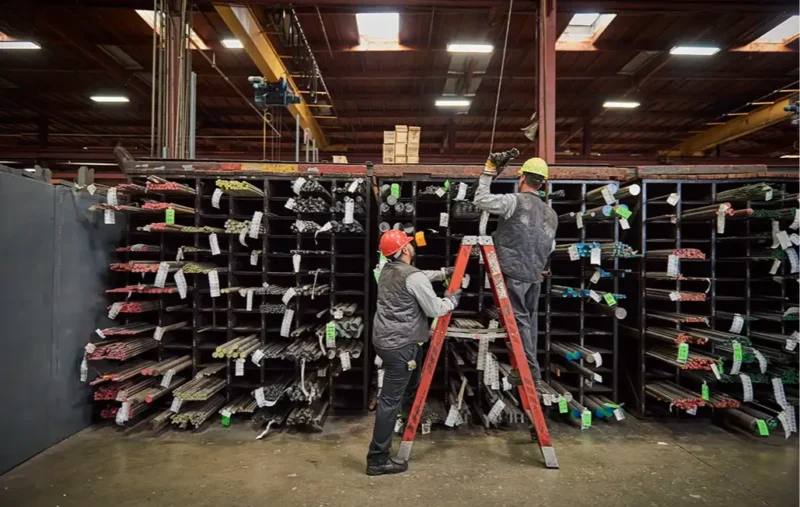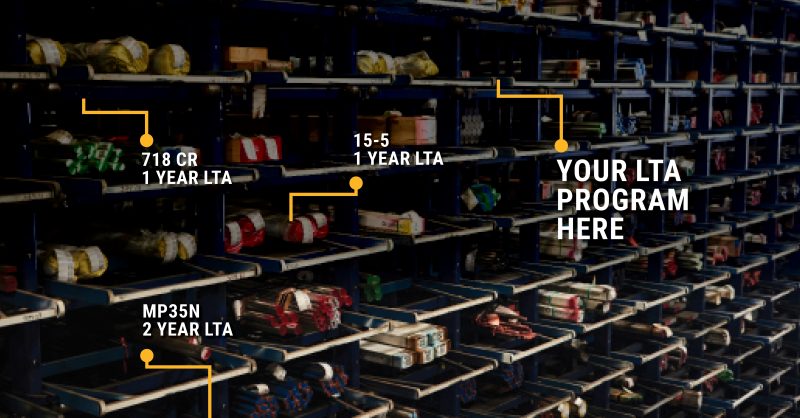Whether in the medical, industrial, aerospace, or a range of other industries, stainless steel is everywhere. This extremely common metal is utilized for its durability, strength, and corrosion resistance.
Stainless steel falls into four main categories: austenitic, ferritic, martensitic, and duplex. Read on to learn the properties of each type of stainless steel and determine how to choose the best stainless for your upcoming projects.
What is Stainless Steel?
Stainless steel is an iron-based alloy that’s made by combining iron with many different metals and materials, including chromium, nickel, molybdenum, and nitrogen. Thanks to its combination of materials, stainless steel’s characteristics include:
- Corrosion resistant: Stainless steel contains at least 10.5% chromium, making it resistant to corrosion.
- Strong: The combination of iron and nickel creates an extremely strong type of metal.
- Temperature resistant: Some types of stainless steel can withstand temperatures ranging from -238°F to above 3,000°F.
- Non-porous: The surface of stainless steel is non-porous, making it a hygienic material for both the food and medical industries.
The Four Main Types of Stainless Steel
Stainless steel is a very versatile alloy; there are over 150 different grades of stainless steel. Together, these fall into four main categories, each named for their specific microstructure.
Austenitic Stainless Steel
Austenitic stainless steel is among the most common categories of stainless steel material. Its key properties include:
- Microstructure: Austenitic stainless steel is made of face-centered cubic crystals known as austenites.
- Strength: This is an extremely strong stainless steel material, which can be further strengthened through cold working.
- Corrosion resistance: Austenitic stainless steels are often made with high levels of chromium and nickel, which makes them quite corrosion resistant, even in the face of highly-corrosive materials.
- Machinability: Because austenitic stainless steel is hardened through cold working, it can be hard to machine. It also has high ductility, which can make machining an even greater challenge. To improve its machinability, some manufacturers add materials like sulfur or selenium, which lower its ductility.
Austenitic steel is a versatile material, making it an excellent stainless steel for aerospace, automotive, food and beverage, chemical processing, and medical applications. Common types of austenitic stainless steel include Type 304, often used in cookware and kitchen materials, and Type 316, a very corrosion-resistant stainless steel used in chemical processing and marine applications.
Ferritic Stainless Steel
Ferritic stainless steels are very high in chromium, which drives a number of their trademark properties:
- Microstructure: Ferritic stainless steel is made up of body-centered cubic crystals known as ferrites.
- Strength: Ferritic stainless is moderately strong. Its strength can be improved somewhat through cold working, but not as much as austenitic stainless.
- Corrosion resistance: Because of its high chromium content, ferritic stainless steel is very resistant to corrosion and oxidation.
- Machinability: As compared to austenitic stainless steel, ferritic stainless steel is significantly more machinable. It doesn’t harden through work and has greater thermal conductivity, making it more malleable.
Ferritic stainless steel is commonly used in the automotive industry, in cutlery and kitchen appliances, and in some chemical processing. Common types include Grade 430, commonly found in dishwashers, refrigerators, and stove top ranges, and Grade 446, often used in industrial furnaces.
Martensitic Stainless Steel
For high strength and hardness, martensitic stainless steel is an excellent choice. The properties of this stainless steel include:
- Microstructure: Martensitic stainless steel is made of body-centered tetragonal crystals known as martensites.
- Strength: This steel can be hardened through heat treatments, enabling tensile strengths of up to 1700 MPa.
- Corrosion resistance: Martensitic stainless steel is moderately resistant to corrosion. Its resistance can be improved slightly through heat treatment.
- Machinability: Martensitic stainless steel is a fairly machinable type of steel, though heat treatment makes it harder to machine.
Martensitic stainless steel is a common stainless steel for medical devices like surgical and dental instruments, in industrial and aerospace components, and more. Common types include AISI 410, used in cutlery, and AISI 420 and 440, used in cutting tools.
Duplex Stainless Steel
Duplex stainless steel combines both austenitic and ferritic stainless steel into a single material. This stainless steel’s properties include:
- Microstructure: Duplex stainless steel contains a combination of austenitic and ferritic stainless steel crystals.
- Strength: It can be twice as strong as austenitic stainless steel alone, with a tensile strength of 770 MPa.
- Corrosion resistance: Duplex stainless steel also has high corrosion resistance, especially in marine environments.
- Machinability: Duplex stainless steel is not as machinable as austenitic or ferritic stainless steels alone. It’s both strong and work-hardened, making machining difficult.
Duplex stainless steel is a versatile material. It’s often used in the marine, construction, and processing industries. Common types of duplex stainless include Grade 2205 and Grade 2507, a more corrosion-resistant and stronger materials.
How to Choose the Right Stainless Steel
When selecting the right stainless steel for your project, it’s important to consider the properties you need. Consider the primary factors your stainless steel will be exposed to, like extreme temperature, possible sources of corrosion, stress and weight, necessary machining, and more.
Unsure what materials you need? Consult with an expert from Fry Steel. Our sales reps are here to help you find the perfect selection to suit your needs.
Fry Steel: Your Source for Stainless Steel
Fry Steel is your leading source of premium stainless steel. We hold all of our suppliers to the same high standards to which we hold ourselves. Join leading names in the space, defense, naval, and industrial industries in sourcing your stainless steel from Fry Steel.






